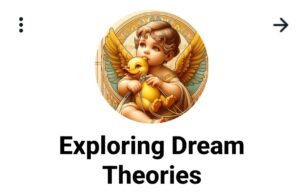Cooperative Neurophenomenology and dreaming
Cooperative Neurophenomenology
A concept emerging from the intersection of neuroscience, phenomenology, and dream studies
Definition
Cooperative neurophenomenology refers to an interdisciplinary framework where first-person lived experiences (phenomenology) and third-person neurophysiological data (neuroscience) are co-developed through collaborative experimental and therapeutic processes. The term suggests not only a methodological integration but also an intentional alliance between subjective insight and brain-based mechanisms—especially within altered states of consciousness, such as dreaming, psychedelia, and meditation.
In the context of Altered States of Dreaming, cooperative neurophenomenology proposes that dreamers are not just objects of study, but collaborators in decoding the structure, logic, and transformation of their own minds.
Origins and Theoretical Roots
- Francisco Varela (1996) coined the original concept of “neurophenomenology,” proposing a bridge between phenomenological reports and neural correlates.
- In the cooperative variant, the subject is not passive, but actively engages in shaping the experimental or therapeutic design, often in states like:
- Lucid dreaming
- Hypnagogia
- Psychedelic states
- Meditation-induced dream recall
Key Principles
- First-person and third-person parity
– Phenomenological descriptions (e.g., “I was being dissolved into light while flying”) are not inferior to EEG or fMRI data; they are equal axes of inquiry. - Iterative feedback between brain and experience
– Dreamers reflect on experiences that are simultaneously measured neurally, and these reflections refine the neuroscientific hypotheses. - Participatory epistemology
– The dreamer-participant is co-author of knowledge. Dreamwork becomes an experimental dialogue with their own neural states. - State-specific access
– Lucid dreams, psychedelics, and incubation technologies provide privileged access to symbolic and affective layers not accessible in waking cognition, allowing real-time feedback.
Applications in Dream Research and Therapy
Lucid Dreaming + EEG
- Dreamers trained to become lucid signal with eye movements (e.g., LaBerge paradigm).
- Their subjective reports of symbols, colors, or actions are matched to real-time neural activation (e.g., prefrontal cortex reactivation).
- Use: Treating PTSD by co-developing dream exposure protocols with neural monitoring.
Psychedelic-Assisted Therapy
- Patients in MDMA-assisted therapy describe symbolic visions (e.g., “my trauma became a burning tree”).
- Neuroimaging shows decoupling of DMN and increased limbic activation.
- Therapists use symbolic content and neural markers together to guide integration sessions.
Dream Incubation Devices
- Hypnagogic interfaces like Dormio suggest verbal prompts (“Think of a garden…”).
- EEG or EMG markers confirm entry into Stage 1 sleep.
- Participants co-reflect: “I saw a lush valley,” enriching both subjective taxonomy and algorithmic training data.


